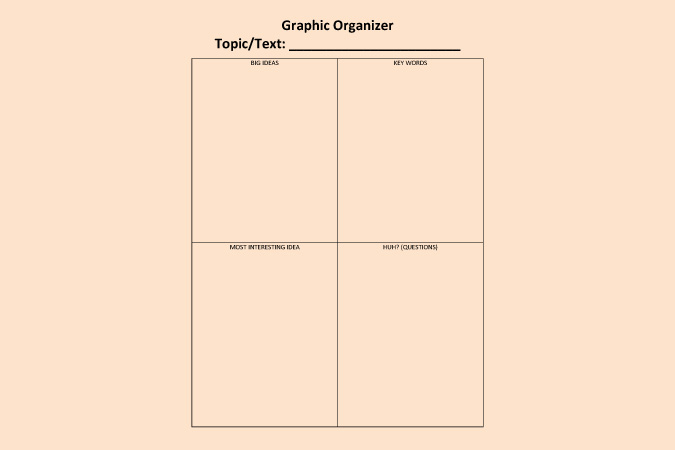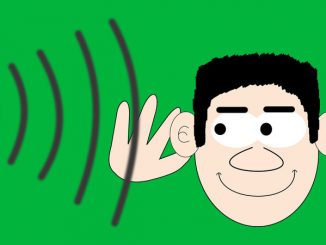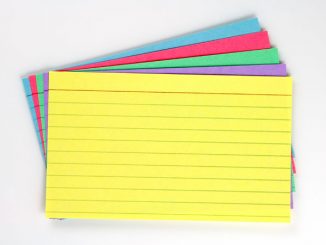
Welcome to part three of a four-part series on creative approaches to reading from a textbook in your faith formation sessions. In this series, I am sharing with you some creative ideas for reading from a textbook that make it, not only more engaging, but also more effective. The third approach I offer is known as a “Graphic Organizer.”
Graphic Organizers
- A graphic organizer is a worksheet that is given to participants to help them visualize, identify, organize, and make sense of information they are reading silently from a text. It can help learners to identify relationships between important concepts in a text. It is basically a visual map of what they are reading, which is why graphic organizers are also known as “concept maps.”
- The graphic organizer should be simple: a sheet of paper with a few boxes or shapes in which young people are to record specific information as they read. My example labels the boxes as:
- Big idea(s)
- Key words
- Most interesting idea
- Huh? (concepts not understood)
- Assign a text to be read silently, and provide each participant with a graphic organizer.
- Go over the information participants are to organize, and then provide them with a set amount of time to complete the reading/organizing.
- As always, announce less time than is realistically possible to do the reading in order to create a sense of urgency. Then you can extend the reading time a few minutes if needed.
- Use the graphic organizer as a basis for your follow-up discussion and as a way of assessing learners’ comprehension of the material.
This is, of course, just one example. Here are a variety of graphic organizers you can peruse to get your creative juices flowing!
Join me on the Loyola Press Facebook page for my Facebook Live event on Tuesday, October 2 at 6 p.m. Central time. I’ll provide exclusive commentary on my 20 tips for catechists and give away a signed copy of my new book Living the Sacraments!





Be the first to comment